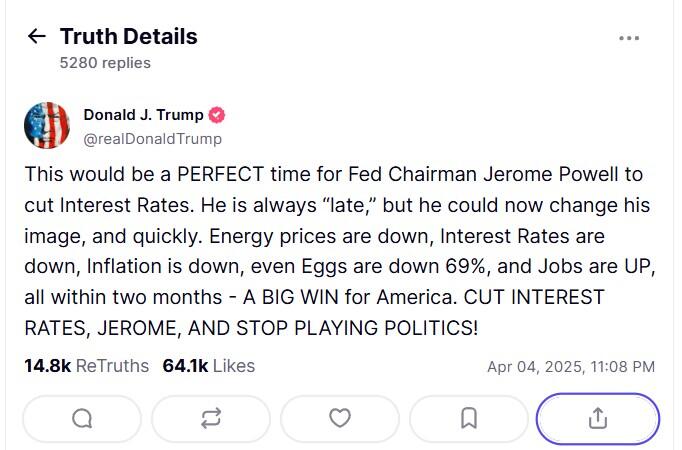Tariffs continue to create market volatility as industries across the globe await the results of United States-China trade talks that could come at any time. Encouragingly, late last week China announced - for the first time publicly - it was open to talks, which boosted markets and sentiment that a deal would be done sooner rather than later.
Meanwhile, weak US economic data held back USD gains, even as global trade tensions eased and markets corrected.
The CB Consumer Confidence Index dropped to 86 in April - its lowest level since October 2021 - and the preliminary US Q1 GDP estimate disappointed too, showing a 0.3% annualised contraction instead of the expected 0.4% growth - a sharp decline from the previous quarter’s 2.4% expansion.
In tandem, the Personal Consumption Expenditures (PCE) Price Index edged 0.2% lower in March to 2.3% - missing an expected 2.2% drop.
April US Nonfarm Payrolls rose by 177,000, exceeding forecasts of 130,000, though they came short of revised March figures of 185,000.
After news of the data, U.S. President Donald Trump demanded that the Fed lower rates via a post on his Truth Social Network.

Euro cautious
The euro faced mild selling pressure for the second week in a row. However, it closed Friday near 1.1350 the USD, not much changed from its opening level.
The pairing seems to have capped off their bearish slide and may soon kick off another bull run, but market participants remain cautious about the dollar due to concerns over how the White House's tariff policies could impact the domestic economy.
The European Central Bank (ECB) has left the door open for a 25-basis point rate cut next month as it may need to lower interest rates below neutral levels to prop up the economy.
The Euro area April HICP was stable, rising 2.2% year-on-year (YoY) unchanged from March.
The core measure rose 2.7% year-on-year (YoY) vs 2.4% YoY, pushed higher by services inflation - rising 1.3% from the previous month.
GBP/USD
The British pound hit a May 1 high of 1.3345 and could rise against a weakened U.S. dollar - dependent on the Bank of England following through with its own 25 point cut to interest rates.
The GBP/USD could come under pressure as the interest rate differential could benefit the US dollar as the Federal Reserve is projected to lower rates until July.
Aussie hits highs against the greenback
The AUD/USD reached a year-to-date high in the mid-0.64s - fuelled by positive risk sentiment as Australians went to the polls over the weekend.
Key Economic and Earnings Events for the Week Ahead
On the back of a Labor election win, Australian jobs data comes through today, while U.S. markets continue to volley earnings reports on a volatile correction run.
The U.S. is set to announce its April Services PMI this week at an expected 50.6, down from March's 50.8.
Tuesday: U.S. export data will be made available and it will be interesting to see how tariffs - which impose taxes on imports into America - will affect.
More earnings reports from tech and services in the U.S. are expected to arrive.
Wednesday: The 10-year bonds auction in the U.S. will provide another indicator on inflation expectations.
Australia’s Ai Group will fork out for construction, industry and manufacturing data that looks to rebound from March negatives.
Thursday: The Bank of Japan is set to adjust its monetary policy, with all eyes on whether interest rate cuts will be top billing at the meeting.
Friday: U.S. Mortgage rates and consumer inflation expectations will lead on Friday, while the 30-year bond auction will be announced, along with the Fed’s balance sheet.
Vehicle sales out of China may impact the sector, where 25% tariffs on steel, vehicles and parts imported into the U.S. crunch automaker sales elsewhere.
